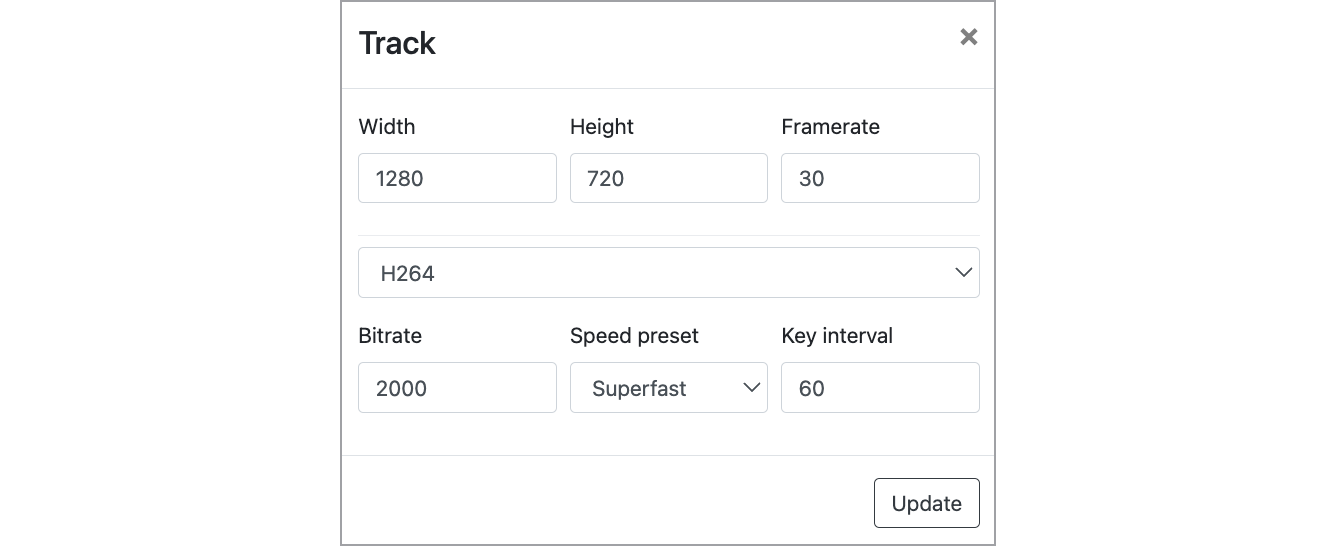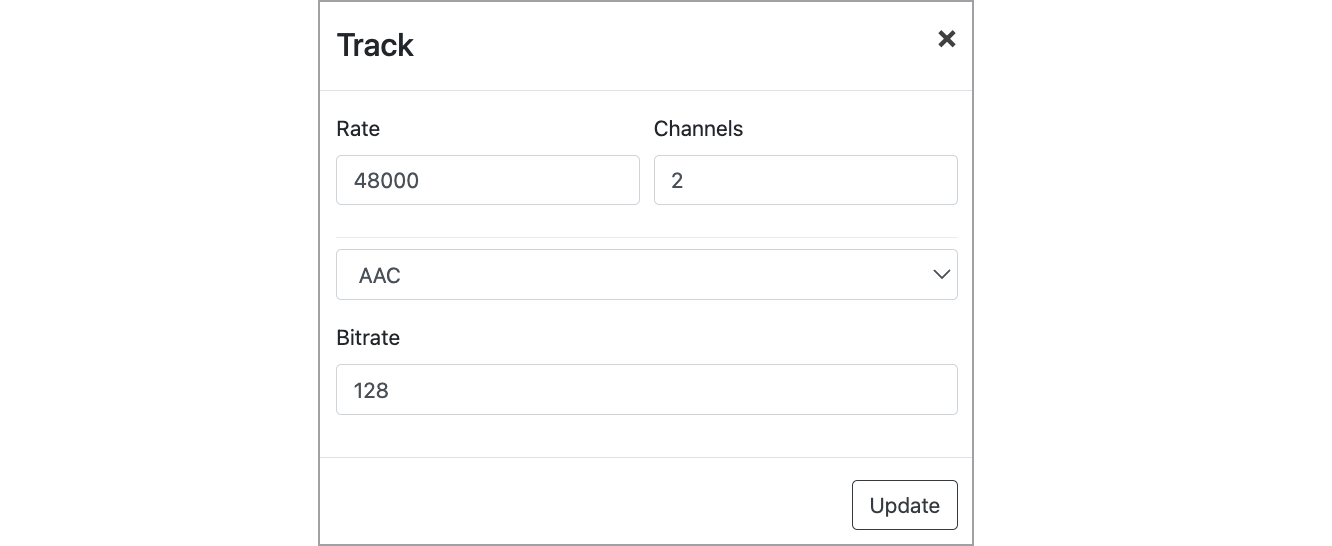Learn how to create a stream.
An stream enables you to deliver your content to your audience.
At the time of creation, Ceeblue creates the optimal architecture to support your stream based on your requirements:
- Input and output locations
- Codecs supported by the output device
- Video and audio formats
Therefore, you should create a new stream immediately before using it.
Ceeblue will automatically scale up resources and load balance during the live stream to ensure a quality user experience.
Create a new stream
API
You can create a stream directly through the API. Use the following recipe as a guide to set up your first stream.
Dashboard
Use the following steps to create a new stream through the dashboard:
- Log into Ceeblue Cloud.
- On the Stream tab, click +. The New Input popup window appears.
- From the first dropdown menu, select the ingest protocol.
- From the second dropdown menu, select Adjustable transcoding.
You can also select Passthrough. However, when Passthrough is selected, you must provide a stream with a suitable codec for the delivery protocol.
- (Optional) Set the IP address, Latitude, and Longitude.
By default, these values are set based on the IP address, latitude, and longitude of your computer. When these values are set, Ceeblue is able to provide you the ingestion node closest to your location. - (Optional) Enter a Callback URI.
- From the AccessMode dropdown menu, select Public. choose who can access the stream.
For private content, you should use a tokenized Private stream.
- Click Create. A new stream will be created and will appear on the stream list page.
Configure output qualities
When a new stream is created with adjustable transcoding, Ceeblue defines a preconfigured set of video and audio tracks. You can edit these preconfigured output settings according to your needs or add predefined configurations from the dropdown menu.
Transcoding cannot be edited while the stream is ingesting.
Video

Video track settings
The following table lists the preconfigured video output settings.
| Codec | Scale | Framerate | Bitrate | Additional Info |
|---|---|---|---|---|
| H.264 | 1280x720 | 30 | 2000 kbps | Preset: superfast Key-int: 60 |
| H.264 | 854x480 | 30 | 1200 kbps | Preset: superfast Key-int: 60 |
| VP8 | 1280x720 | 30 | 2000 kkbps | Key-int: 60 |
| VP8 | 854x480 | 30 | 1200 kkbps | Key-int: 60 |
Use the following steps to update one of these settings:
-
On the Stream tab, click the title of a stream card. A page containing the stream details appears.
-
Under Video tracks, click a card. The Track popup window appears.
-
Define the Width, Height, and Framerate.
-
From the first dropdown menu, choose the codec.
-
Define the Bitrate.
-
From the Speed preset dropdown menu, choose a speed option. For the lowest latency, select the highest. For the best quality, select the lowest.
-
Define the Key interval.
We recommend setting this to 2x the framerate.
-
Click Update. The updated output quality is added to the Video tracks list.
-
Click
 to save changes that have been made.
to save changes that have been made.
Audio

Audio track settings
The following table lists the preconfigured audio output settings.
| Codec | Rate | Channels | Bitrate |
|---|---|---|---|
| AAC | 48 kHz | 2 | 128 kbps |
| Opus | 48 kHz | 2 | 128 kbps |
Use the following steps to update one of these settings:
- On the Stream tab, click the title of a stream card. A page containing the stream details appears.
- Under Audio tracks, click a card. The Track popup window appears.
- Define the Rate and Channels.
- From the first dropdown menu, choose the codec.
- Define the Bitrate.
- Click Update. The updated output quality is added to the Audio tracks list.
- Click
 to save changes that have been made.
to save changes that have been made.
Retrieve stream information for encoder setup
When setting up an encoder, you will need to enter the endpoint and name for the stream.
Use the following steps to retrieve stream information:
- On the Stream tab, click the title of a stream card. A page containing the stream details appears.
- In the Input (Public), copy the Endpoint value. Use this for the stream URL in your encoder.
- Copy the Stream name value. Use this for the stream key in your encoder.
